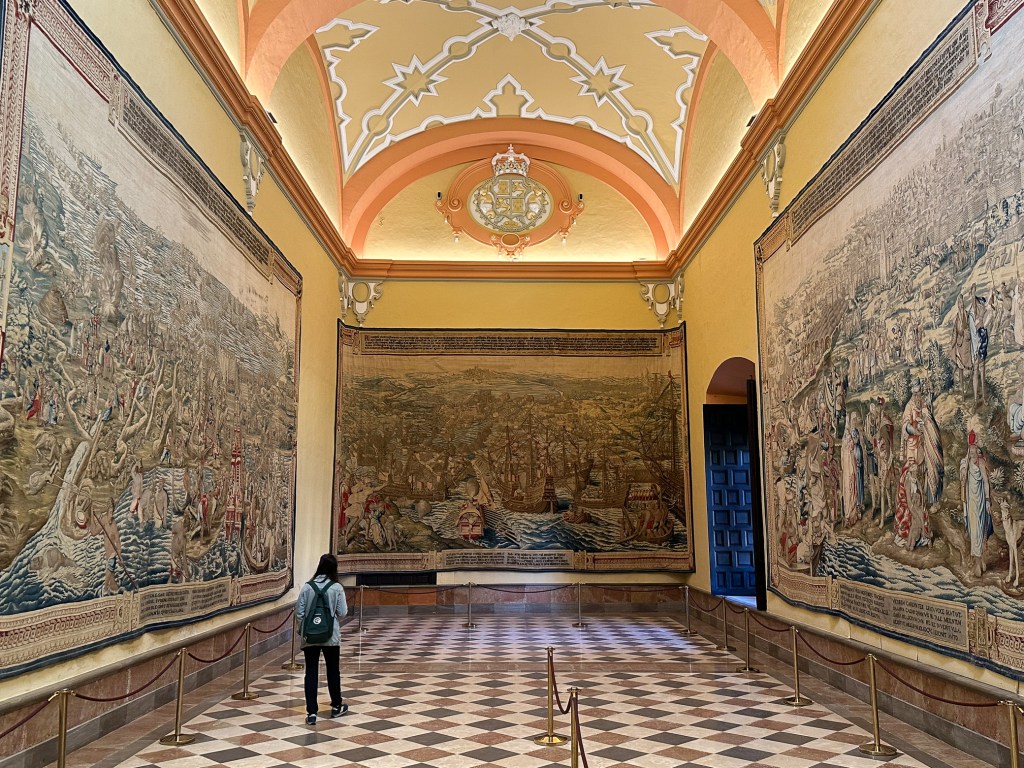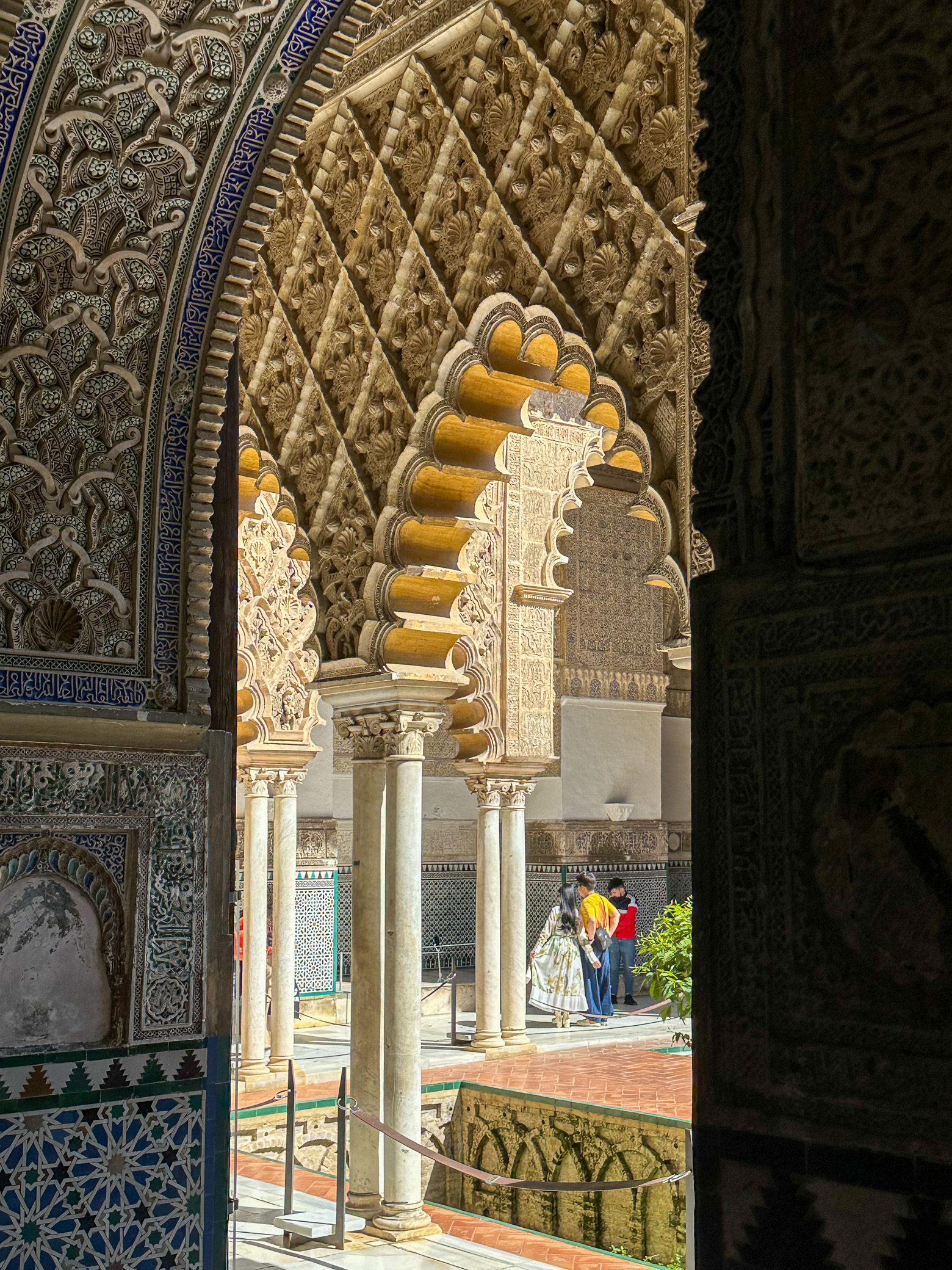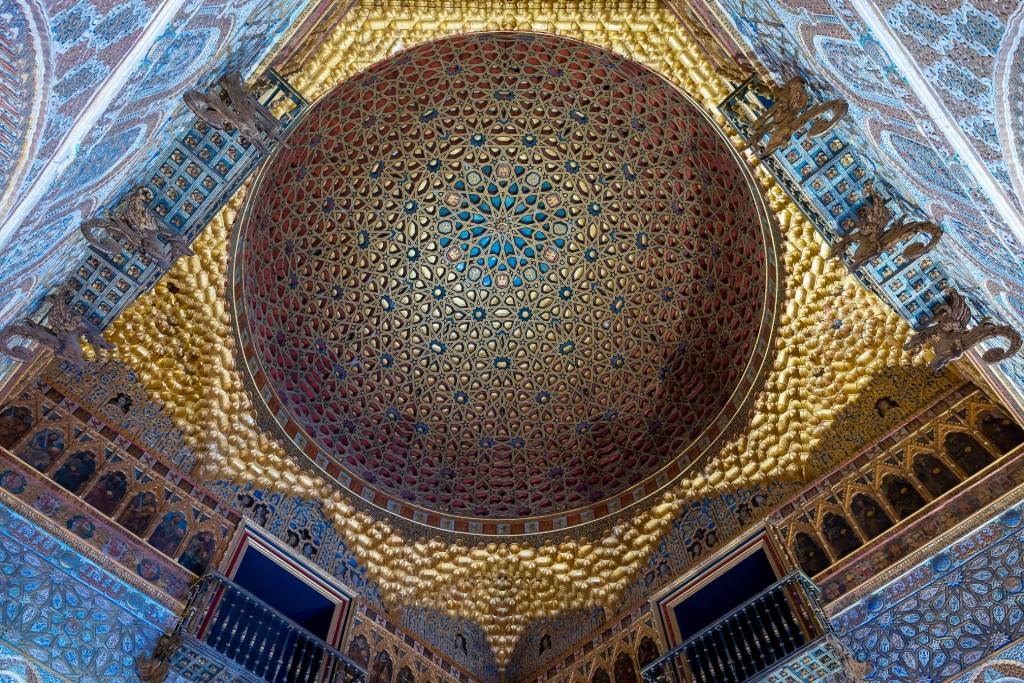
Seville explored – Real Alcázar introduces you to the Royal Palace of Seville, Spain. The palace was originally built as a fortress during the 10th century by the Moors and has since been expanded and modified by various rulers and monarchies. A UNESCO World Heritage Site, considered one of the most important cultural landmarks in Spain. It has been used as a filming location for several films and TV shows, including “Game of Thrones,” which featured the palace as the setting for Dorne’s Waterpark. For history and more photos of its splendor, continue after the jump…

The history that happened here is really interesting. In the building to the right, famous explorers from the 15th center such as Christopher Columbus, Francesco Magellan, and Amerigo Vespucci planned their voyages and received funding from the Catholic Monarchs (also known as Reyes Católicos in Spanish). Isabella I of Castile and Ferdinand II of Aragon, who married in 1469 and jointly ruled the Kingdoms of Castile and Kingdom of Aragon in Spain from 1474 to 1504.
Isabella and Ferdinand are important figures in Spanish history, as their reigns marked the beginning of the modern Spanish state. They were known for their religious devotion and their role in the Reconquista, the campaign to reconquer Spain from the Moors.
One of their most important accomplishments was the completion of the Reconquista, which ended with the fall of Granada, the last Muslim stronghold in Spain, in 1492. That same year, Isabella and Ferdinand sponsored Christopher Columbus’ voyages, which resulted in the discovery of the New World and the beginning of the Spanish colonial empire.


The entire palace is a stunning mix of Christian and Moorish architectural styles, featuring numerous small courtyards with tubs to cool off the heat of the Spanish summer.

Impressive are the several storerooms that can be accessed beneath the old palace, as well as the underground baths of Lady María de Padilla.

The baths were named after Lady María de Padilla, mistress of King Peter the Cruel, who is said to have used the rooms as her private baths.
The baths were originally built in the 14th century and are an impressive example of Mudéjar architecture, which combines Islamic and Christian design elements. The chambers feature a series of interconnected vaulted chambers, supported by slender columns and arches.
The most striking feature of the baths are the intricate star-shaped skylights which allow natural light to flood into the basement, creating a beautiful play of light and shadow on the walls and floors. The ceiling is made of fine marble, which casts a soft, diffused light in the dimly lit room.


The Alcazar is known for its unique mix of architectural styles, which includes Mudéjar, Gothic, Renaissance and Baroque elements. One of its most prominent features is the intricate tile work and plaster decorations found throughout the palace, which reflect the influence of Islamic art.


Patio del Crucero is one of the most beautiful and iconic courtyards of the Royal Alcazar of Seville. Pelataran is located in the northern part of the palace complex and functions as a central hub that connects the various parts of the palace.
Patio del Crucero is known for its stunning Gothic architecture and intricate tile work. The centerpiece of the courtyard is a beautiful fountain, which is surrounded by ornate marble balustrades and arches. The courtyard also features several large palm trees, which add to the tropical ambiance.




The splendor of the Royal Alcázar is stunning, and certainly a highlight for The Significant other and I during our visit to Seville. I hope you enjoy the little tour through the palace too.
I shoot mainly with a Leica SL2-S and a Vario-Elmarit-SL 1:2.8/24-70 ASPH. Post-processing in Lightroom Classic.
Happy Thursday!
Marcus
Related post:
Seville Exploring – Setas de Seville
Impromptu Flamenco session
Seville Exploring – Plaza de España
My Seville camera bag
